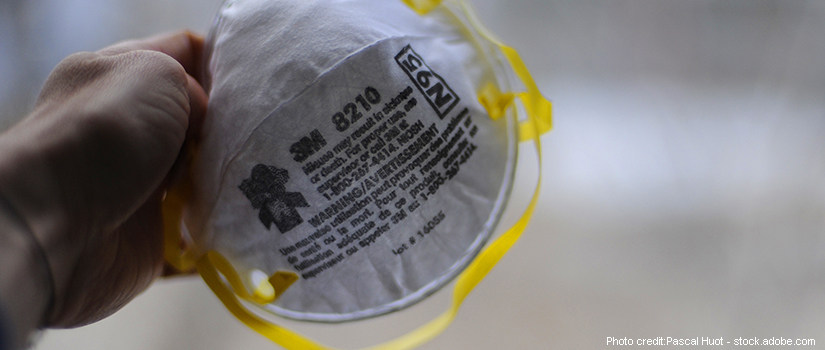By Abe Danaher | April 27, 2020
As confirmed cases of the coronavirus continue to increase, researchers at the University of South Carolina and Clemson University are combining their technical expertise and national networks to bring groundbreaking face mask cleaning and disinfecting processes to the state’s hospitals.
Led by UofSC’s Michael Matthews and Eric Vejerano and Clemson’s Mark Johnson and Melinda Harman, the team’s goal is to allow N95 face masks and other contaminated protective equipment to be used multiple times by health care workers. The process they are creating uses dense-phase carbon dioxide, which will remove visible contaminants – such as blood, mucus and oil – from the N95 face masks used by most health care workers.
“There’s so much information and data and news and possibilities swirling around like a big vortex. We are charting a path forward out of that vortex that will allow these companies to help the health care workers.”
-Michael Matthews, UofSC College of Engineering and Computing
Currently, masks that show visible contamination cannot be sterilized for re-use and must be discarded. By removing such contaminants, the dense-phase CO2 process will help address the growing shortage of masks being seen in hospitals across the country.
“We are putting together an emergency-use authorization with data and information so that these processes are accepted by the FDA as acceptable for cleaning face masks,” says Matthews, the senior associate dean for research and graduate programs at the UofSC College of Engineering and Computing. “And if they can be cleaned, they can be subsequently sterilized. Success with this project will allow a huge number of masks to be put back into service safely.”
To do so, Matthews and Johnson are bringing together their extensive professional networks to enable this first-of-its-kind process. Matthews is working with two companies, Cool Clean Technologies in Eagan, Minnesota, and Thar Process in Pittsburgh, Pennsylvania, as these companies develop the dense-phase CO2 processes. He is providing these companies with technical advice such as what tests and experiments they should run to verify the effectiveness of their processes, and also connecting them with labs capable of conducting the extensive biological experiments FDA emergency authorization requires.
Johnson, the director of Clemson’s Center for Advanced Manufacturing, is focusing on securing the necessary funding for the research group and building connections with hospitals and experts both within South Carolina and across the U.S. As a former project manager for the Department of Energy, his is working closely with the DOE and has the team’s white paper on the desk of the DOE Office of Science and Office of Advanced Manufacturing. Together, Johnson and Matthews are working to maneuver the two companies through the complex process of FDA authorization – helping them better understand the regulatory, legal, health care and research landscapes.
“There’s so much information and data and news and possibilities swirling around like a big vortex,” Matthews says. “We are charting a path forward out of that vortex that will allow these companies to help the health care workers.”
To provide specific expertise on the recovery of the masks following the use of the new cleaning products, they have also enlisted the help of Vejerano and Harman. Vejerano, an assistant professor at the UofSC Arnold School of Public Health, studies nanoparticles and their interaction with the environment. Harman, an associate professor of bioengineering at Clemson, researches the recovery and reprocessing of medical devices. Together, they are confirming the effectiveness of the masks after cleansing to ensure that clean face masks are as effective as new masks.
“The critical thing is the efficiency of the masks,” Vejerano says. “It’s supposed to be N95 or more, meaning that the mask is supposed to capture at least 95 percent of the particle. Any process that you subject the masks to, it should retain the efficiency.”
The team is almost complete with the first step of what is a three-step process. They currently have promising results indicating that a cleaned mask effectively mimics regular breathing airflow as well as a new N95 mask. They are also working on showing that the process successfully cleans the mask. Once they complete both steps, they hope to receive emergency approval from the FDA so that they can bring the cleaning process to South Carolina’s hospitals.
“If we can remove visible soils in a way that is acceptable to the FDA,” Matthews says, “then healthcare workers can reuse the disinfected mask and say, ‘well, it looks clean. It smells clean. I feel safe to wear it.’”
